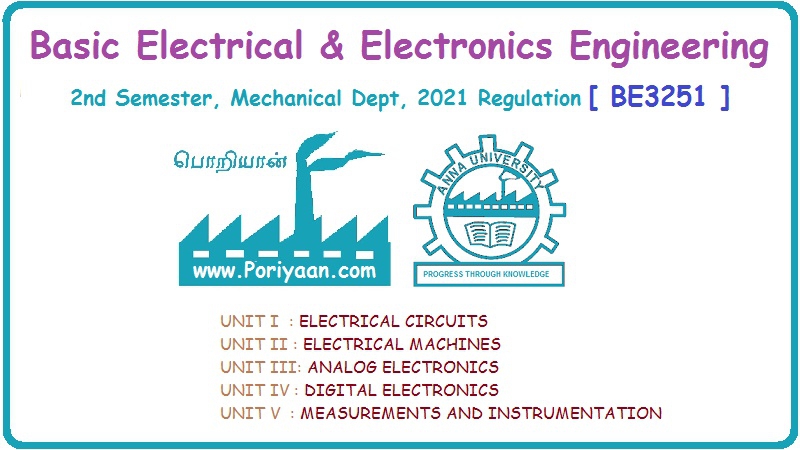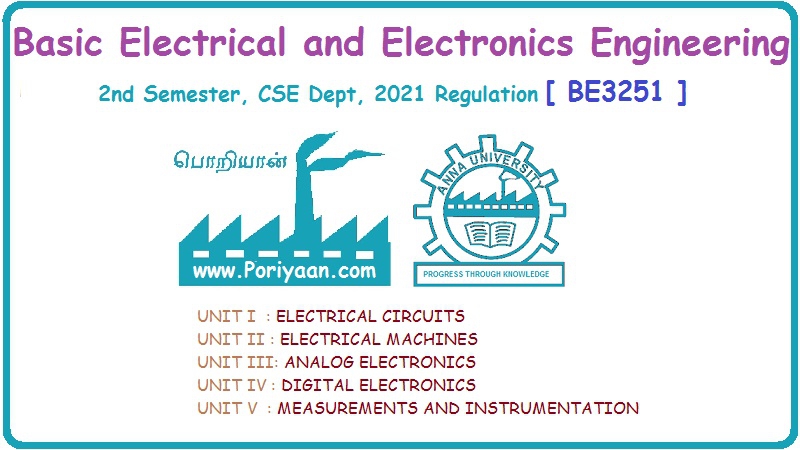Basic Electrical and Electronics Engineering: Unit I: Electrical Circuits
Phase Relation in Pure Resistor
Circuit, Waveform, Formula with Solved Example Problems | Electrical AC Circuits
When a sinusoidal voltage is applied to a resistor, a certain amount of sine wave current passes through it. The voltage/current relation in case of resistor is linear.
PHASE
RELATION IN PURE RESISTOR
When
a sinusoidal voltage is applied to a resistor, a certain amount of sine wave
current passes through it. The voltage/current relation in case of resistor is
linear.
V(t)
= i(t).R
i(t)
= Im sin ωt =
V(t)
= Vm sin ωt =
The
impedance
There
is no phase difference between these two wave forms.
Example: 9
A voltage V = 100 sin 100πt is
applied to a circuit containing of a pure resistor of 20 Ω. Find the following.
(i) Maximum voltage
(ii) Frequency of supply
(iii) Instantaneous current
V
= 100sin 100 π.t
V
= Vm sin ωt
Vm
= π 100
ω
= π100
2πf
= π100
f
= π100/2π
f
= 50 Hz
i
= V/R
=
100 sin100 π t / 20
i
= 5 sin100 π t
Basic Electrical and Electronics Engineering: Unit I: Electrical Circuits : Tag: : Circuit, Waveform, Formula with Solved Example Problems | Electrical AC Circuits - Phase Relation in Pure Resistor
Related Topics
Related Subjects
Basic Electrical and Electronics Engineering
BE3251 2nd semester Mechanical Dept | 2021 Regulation | 2nd Semester Mechanical Dept 2021 Regulation
Basic Electrical and Electronics Engineering
BE3251 2nd Semester CSE Dept 2021 | Regulation | 2nd Semester CSE Dept 2021 Regulation


